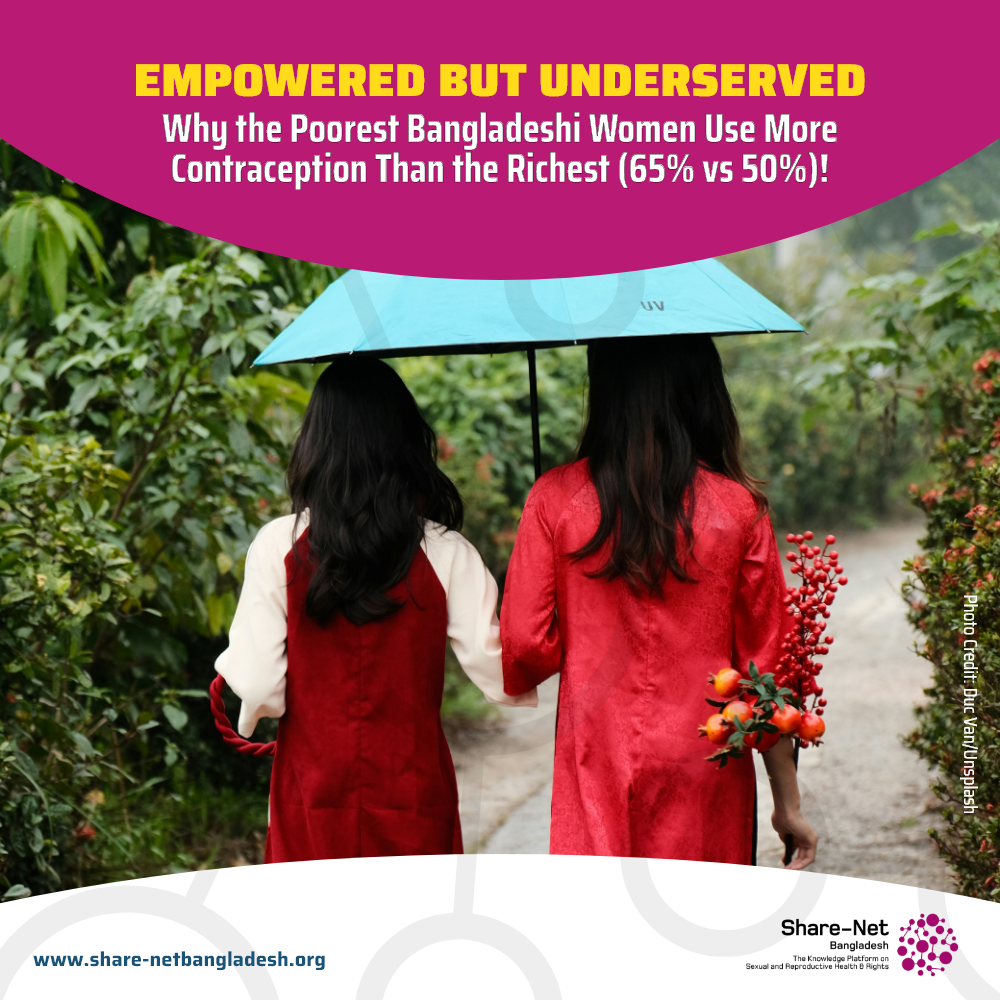Empowered Yet Underserved: What the Latest Data Tells Us About Women’s Empowerment and Contraception Use in Bangladesh
In Bangladesh, the intersection of women’s empowerment and access to modern contraception is gaining renewed attention, particularly as the country faces the dual pressures of rising gender inequality and climate-induced disruptions to health services.
A new study titled “Association between Women’s Empowerment and Use of Modern Contraception Methods in Bangladesh”, based on the Bangladesh Demographic and Health Survey (BDHS) 2022, offers fresh insight into how different types of empowerment influence contraceptive decisions among Bangladeshi women.
Analyzing data from nearly 18,000 currently married women of reproductive age, the study measured empowerment using the SWPER index, a globally recognized tool with three key domains: attitude toward violence, social independence, and decision-making power.
Key Findings
🔸 Modern contraceptive use stands at 58.3%, with pills being the most used method (29.3%), followed by injectables (12.1%) and male condoms (8.6%).
🔸 Higher empowerment in decision-making and attitude toward violence domains were linked to slightly increased contraception use, though not significantly.
🔸 In contrast, women highly empowered in social independence (such as education, age at marriage, and media exposure) had 14% lower odds of using modern contraception (aOR: 0.86; 95% CI: 0.79–0.95).
“Empowerment alone does not guarantee access. Socially independent women may avoid public health services due to concerns over privacy, quality, and convenience,” the study suggested.
Why It Matters
The study’s findings bring to light a surprising and complex reality: empowerment doesn’t always lead to higher contraceptive use. While 58.3% of Bangladeshi women reported using modern contraception, those with higher social independence—measured by education, age at marriage, and media access—were 14% less likely to use modern contraceptive methods than those with lower independence.
This counters widely held assumptions that empowerment uniformly enhances reproductive health behavior. Instead, the data suggests a nuanced picture:
-
Women with decision-making power and positive attitudes against gender-based violence were slightly more likely to use contraception, but the differences were not statistically significant.
-
Women who are educated, professionally employed, or married later in life might avoid government services due to long wait times, lack of privacy, or mismatch with their lifestyle.
-
Surprisingly, women from the poorest households had the highest rates of contraceptive use (65.1%), indicating that free public health services are more accessible and acceptable to low-income groups.
-
Rural women and those in Sylhet division continue to have the lowest use rates, pointing to persistent geographical and infrastructural inequalities.
This research challenges policymakers to go beyond generic empowerment indicators. Tailored family planning interventions are essential—ones that consider social class, geographic disparities, and service design—to ensure no woman is left behind, regardless of her level of independence.

